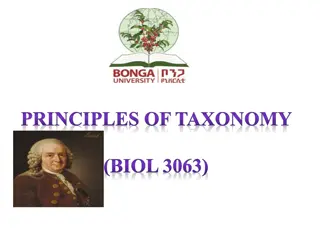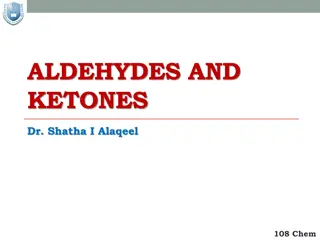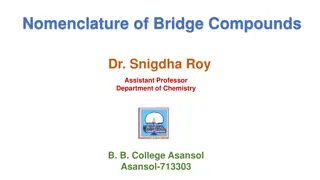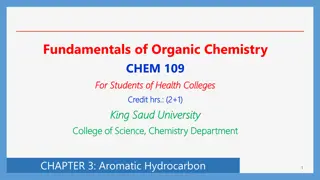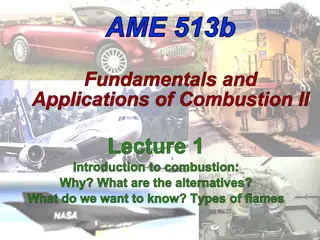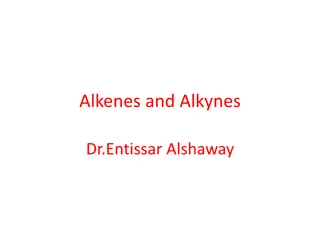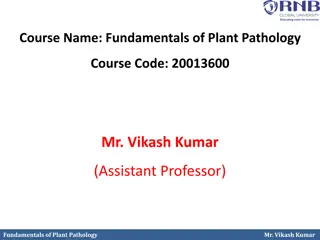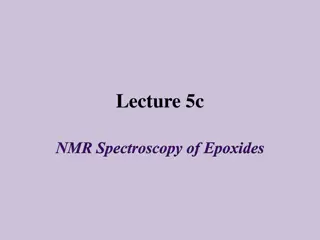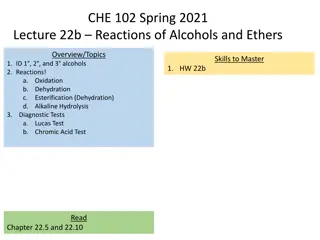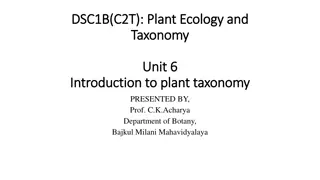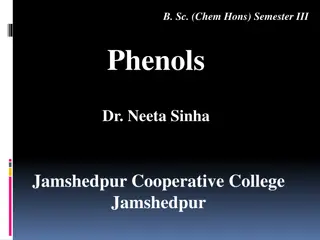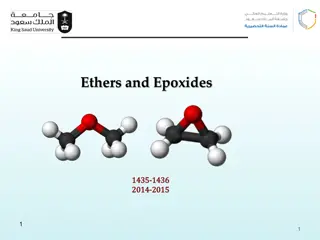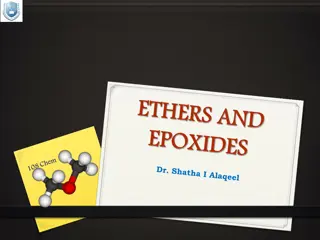Ethers and Epoxides: Types, Nomenclature, Properties, and Preparation
In the realm of organic chemistry, ethers are versatile compounds with distinct properties and synthesis methods. This article delves into the classification, naming conventions, physical characteristics such as boiling points and solubility, as well as the preparation techniques of ethers, including dehydration of alcohols and Williamson synthesis.
Download Presentation

Please find below an Image/Link to download the presentation.
The content on the website is provided AS IS for your information and personal use only. It may not be sold, licensed, or shared on other websites without obtaining consent from the author.If you encounter any issues during the download, it is possible that the publisher has removed the file from their server.
You are allowed to download the files provided on this website for personal or commercial use, subject to the condition that they are used lawfully. All files are the property of their respective owners.
The content on the website is provided AS IS for your information and personal use only. It may not be sold, licensed, or shared on other websites without obtaining consent from the author.
E N D
Presentation Transcript
Chem. Chem. 108 108 Ethers and Epoxides Ethers and Epoxides Chapter Chapter 8 8 1
Ethers Ether is a class of organic compounds that contain an ether group R O R. For the simplest ether, Dimethyl ether Classification of Ethers (I) Aliphatic Ethers (II) Aromatic Ethers 2
Types of Ethers 1- Simple Ethers or Symmetrical Ethers 2- Mixed Ethers or Unsymmetrical Ethers 3
Nomenclature Common Names The two-alkyl groups bonded to the functional group (- O -) are written alphabetically followed by the word ether. Examples: 4
IUPAC System The shorter alkyl group and the oxygen are named as an alkoxy group attached to the longer alkane. They are named as alkoxyalkanes. Examples: 5
5-Chloro-3-ethoxy-hex-1-ene Methoxybenzene P-Methoxytoluene 6
Physical Properties Boiling Points of Ethers: hydrogen bonds cannot form between ether molecules 7
Solubility of Ethers: Ethers are soluble in water, due to their hydrogen bond formation with water molecules. The solubility decreases with increase in the number of carbon atoms. 8
Preparation of Ethers 1- Dehydration of Alcohols 140 C Example: 9
The dehydration of 2 and 3 alcohol is unsuccessful to get ethers as alkenes are formed easily. 10
2- Williamson Synthesis The reaction of a sodium alkoxide RONa or a sodium phenoxidexArONa with an alkyl halide to form an ether. The reaction involves nucleophilic substitution of an alkoxide ion for a halide ion. Examples: 11
If a secondary ( 2) or tertiary alkyl halide ( 3) is used, an alkene is the only reaction product and no ether is formed. 12
Reactions of Ethers Cleavage of Ethers by Acids Substitution Reactions with strong acids HX, X could be; I or Br. Ethers are cleaved by HX to an alcohol and a haloalkane Examples: 13
Point of cleavage: If both the alkyl groups are primary or secondary, the smaller alkyl group gets converted to the alkyl halide predominantly. If one of the alkyl group is tertiary, the point of cleavage is such that the tertiary alkyl halide is formed as the major product If two or more equivalents of acid are used further dehydration can occur on formed alcohols which may react further to form a second mole of alkyl halide. 14
Epoxides (Cyclic Ethers) Epoxide: a cyclic ether in which oxygen is one atom of . a three-membered ring Nomenclature Although cyclic ethers have IUPAC names, their common names are more widely used. IUPAC: prefix ox- shows oxygen in the ring the suffixes -irane, -etane, -olane, and -ane show three, four, five, and six atoms in a saturated ring. O 2 3 O O O O 1 O Oxirane Oxetane Oxolane Oxane 1,4-Dioxane (Ethylene oxide) (Tetrahydrofuran) (Tetrahydropyran) 15
Preparation of Epoxides The simplest and the most important epoxide is ethylene oxide. 1. Air Oxidation of Ethylene By air oxidation of ethylene and silver oxide catalyst. 16
2. Dehydration of dialcohols Examples: 17
3-Conversion of Vicinal Halohydrins to Epoxides Examples: 18
4. Epoxidation method Epoxides are often prepared from reacting with organic peroxy acids (peracids) ex; CH3C(O)OOH in a process called epoxidation. Example: 19
Reactions of Epoxids Epoxides are highly strained and easily undergo ring-opening reactions under both acidic and basic conditions. 20


